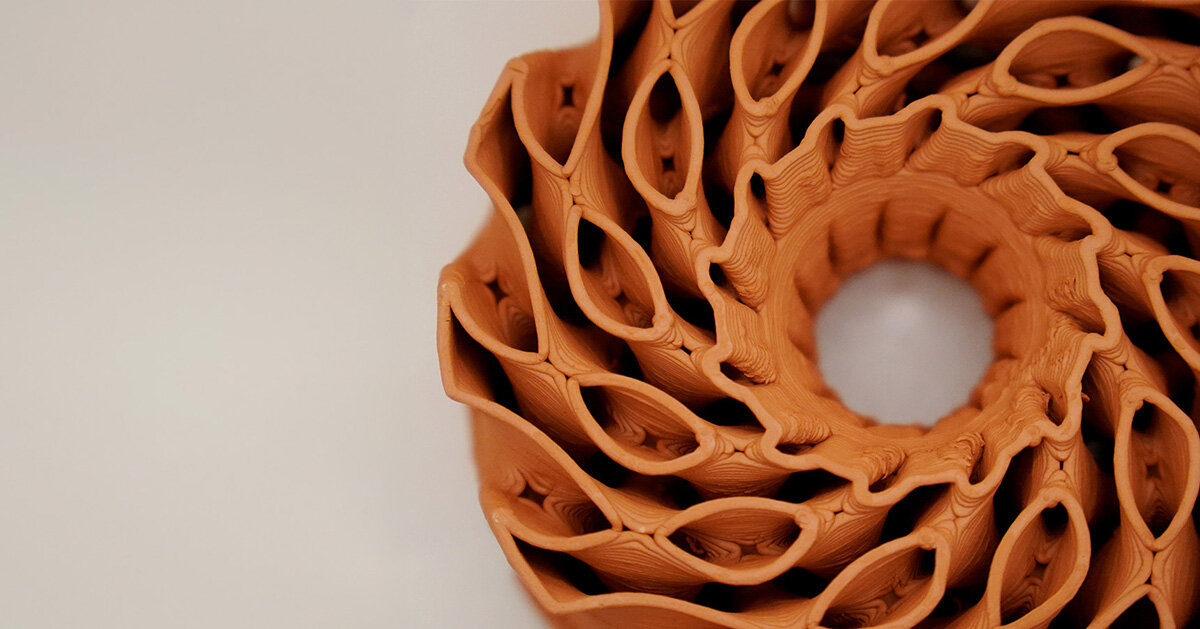
Nature-inspired design in air conditioning systems research
In their thesis project at the Bartlett School of Architecture, UCL, Rameshwari Jonnalagedda explores the potential of nature-inspired design in air conditioning systems. The TerraMound project draws inspiration from termite mounds and investigates minimal surface geometries to develop energy-efficient cooling solutions. These shapes, known for their high surface-area-to-volume ratio, are ideal for optimizing heat exchange. The research involves creating a 3D printed ceramic structure that mimics the porous architecture of termite mounds. This structure incorporates a built-in fan to draw air upwards, while water trickling down from a planter on top facilitates evaporative cooling. The natural moisture absorption properties of the clay enhance this process.
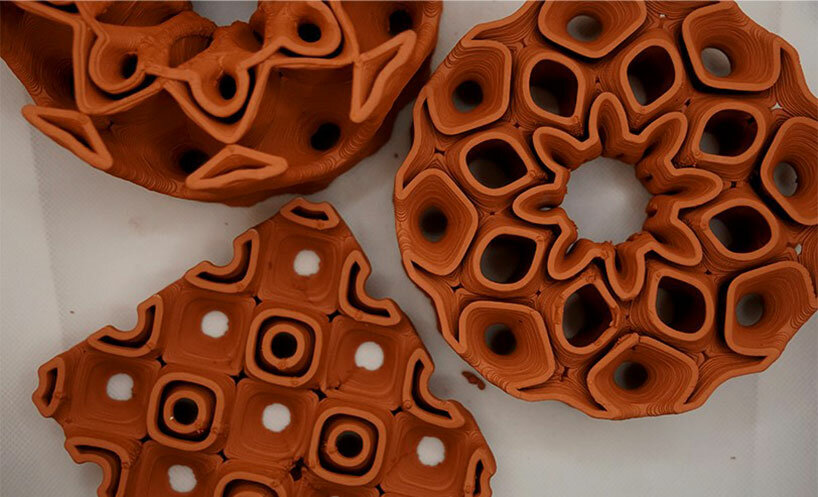
all images courtesy of Rameshwari Jonnalagedda
3D printed ceramic cooling towers act as moisture buffers
A desktop prototype demonstrates the concept’s viability. Using a Delta WASP 4100 3D printer the student creates various minimal surface geometries with different porosities to further explore their cooling potential. The material composition was experimented with, achieving a gradient effect by mixing terracotta clay with stone white clay, showcasing the possibilities for material variation in 3D printing. Rameshwari Jonnalagedda envisions scaling up these designs to create large cooling towers through additive manufacturing. These towers, with adjustable porosity levels, can be customized for different environments—acting as moisture buffers in humid areas and ventilation boosters in dry regions. Integrating these eco-friendly cooling towers into buildings could harness natural elements like water circulation and airflow to regulate temperature efficiently.
Beyond cooling, the adaptability of minimal surfaces allows for customized porosity and material composition, opening up various applications. These include facade panels, large-scale 3D printed walls, and bio-receptive structures like artificial reefs and urban gardens. This research by the Bartlett architecture student marks the beginning of a journey to further explore geometric concepts, materials, and large-scale 3D printing technologies, aiming toward a future where sustainable, bio-inspired designs become a standard in construction and environmental integration.
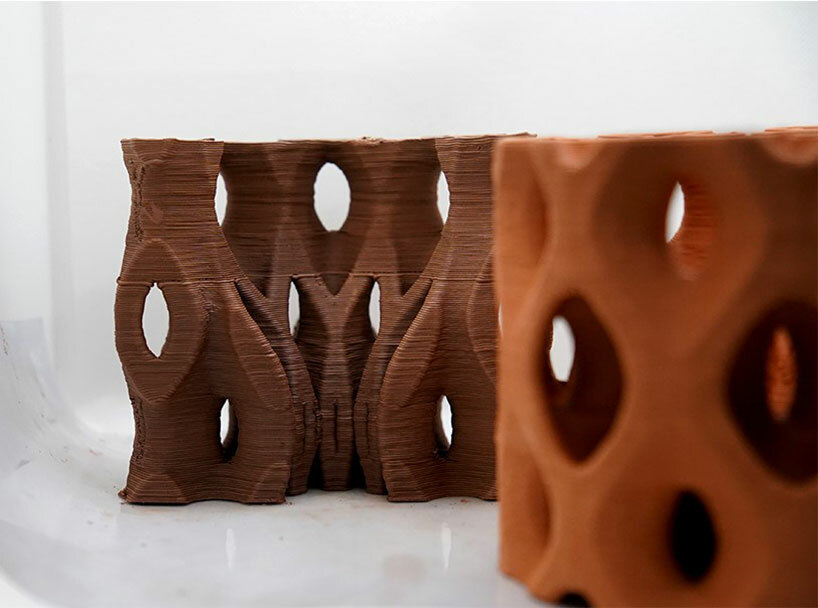
the TerraMound project draws inspiration from termite mounds
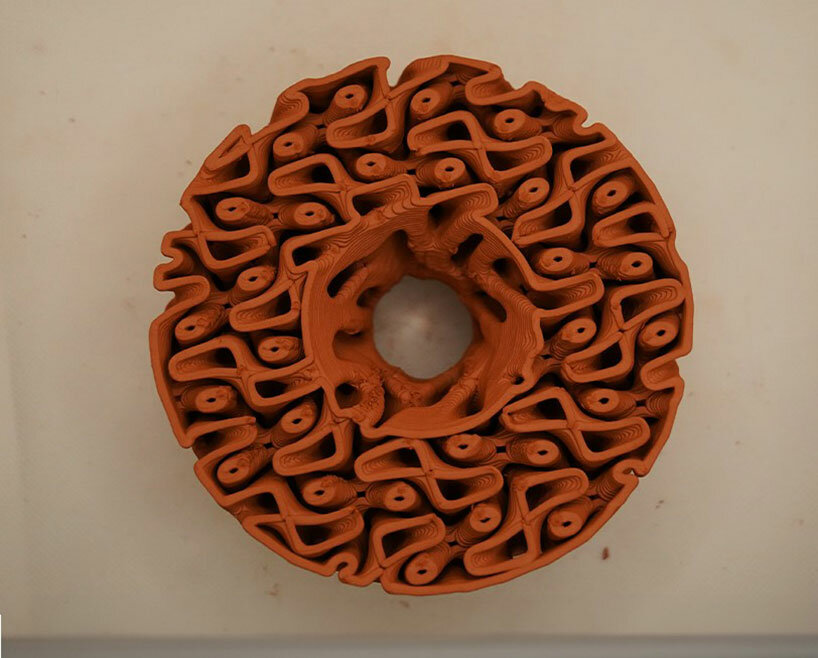
minimal surface geometries develop energy-efficient cooling solutions
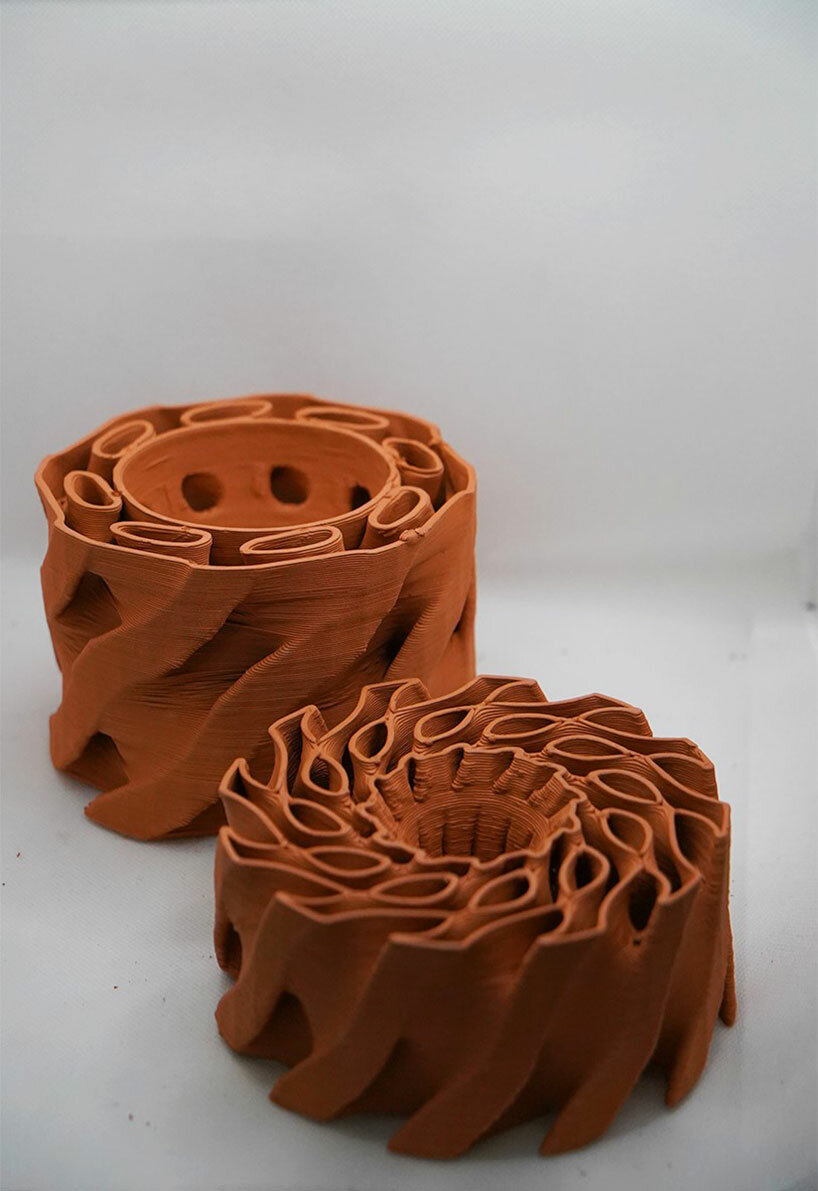
these shapes are ideal for optimizing heat exchange
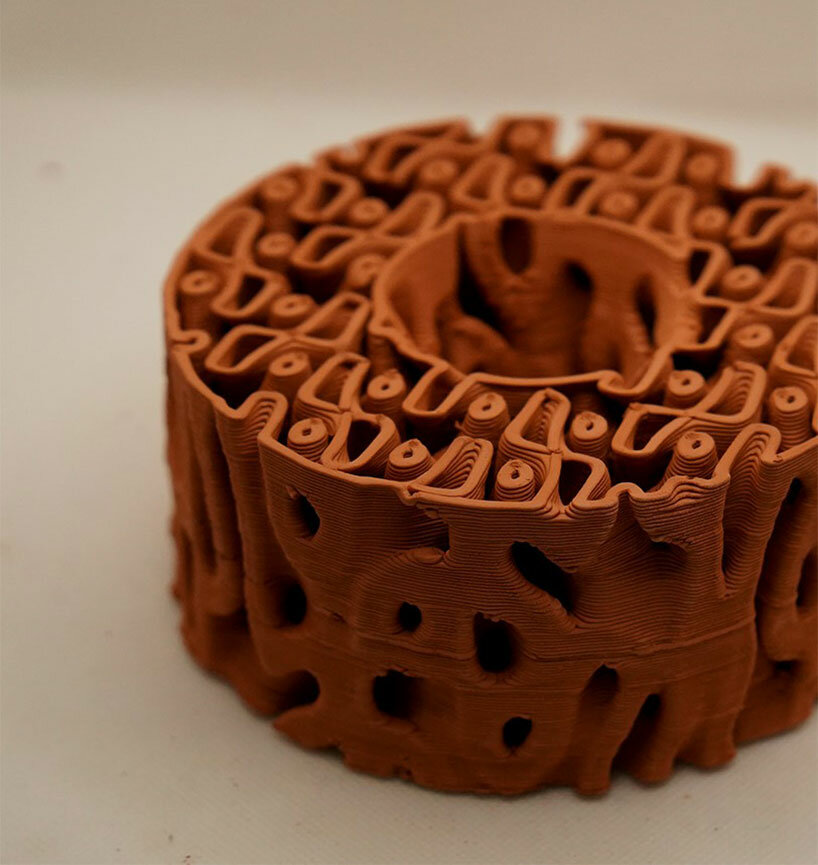
3D printed ceramic structure mimics the porous architecture of termite mounds









